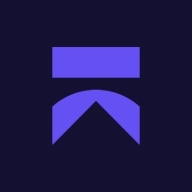

SonarQube and Aikido Security compete in the software security and code analysis category. While SonarQube offers strong integration with development environments, Aikido Security provides significant advantages in proactive security measures.
Features: SonarQube includes automated static code analysis, broad language support, and seamless CI/CD integration. Aikido Security features active threat defense, vulnerability management, and adaptive risk protection.
Ease of Deployment and Customer Service: Both products offer cloud-based and on-premises deployment. Aikido Security offers streamlined deployment and proactive support with dedicated assistance. SonarQube may require more hands-on configuration, which suits developer-centric environments.
Pricing and ROI: SonarQube presents flexible pricing with lower initial costs and provides a favorable ROI through enhanced code quality. Aikido Security requires a higher upfront investment but offers significant security returns, protecting enterprises from vulnerabilities and threats.
| Product | Market Share (%) |
|---|---|
| SonarQube Server (formerly SonarQube) | 20.5% |
| Aikido Security | 0.8% |
| Other | 78.7% |

| Company Size | Count |
|---|---|
| Small Business | 41 |
| Midsize Enterprise | 24 |
| Large Enterprise | 79 |
Aikido Security is an efficient platform for developers, providing a clear overview of code-to-cloud security issues and guiding fast vulnerability resolution.
Aikido Security serves over 6,000 teams with features like instant results and false positives reduction, making it a preferred choice for non-enterprise SaaS businesses with 10-500 developers. Its product-led growth strategy includes a freemium offering, appealing to developers who prefer self-testing before purchasing. Aikido's solution centralizes 11 scans covering the entire SDLC, offering robust security management catered to developers' specific needs.
What are the important features of Aikido Security?
What are the key benefits or ROI?
Aikido Security is implemented effectively in SaaS industries, enabling engineering teams to manage security with limited budgets while focusing on rapid product development. Its comprehensive yet simple solution addresses the unique pain points of growing tech companies.
SonarQube provides comprehensive support for multi-language development, custom coding rules, and quality gates, integrated seamlessly into CI/CD pipelines. It empowers teams with clear insights through intuitive dashboards, identifying vulnerabilities, code smells, and technical debt.
SonarQube is renowned for its extensive capabilities in static code analysis, making it an invaluable tool for maintaining code quality. By fully integrating into development processes, it allows organizations to manage vulnerabilities and ensure compliance with coding standards. Its extensive community and open-source roots contribute to its accessibility, while robust dashboards facilitate code quality monitoring. Despite its strengths, feedback suggests enhancing analysis speed, better integration with DevOps tools, and refining the user interface. Users also point to the need for handling false positives effectively and expanding on AI-based features for dynamic code analysis.
What are SonarQube's main features?In industries like finance and healthcare, SonarQube aids in obtaining regulatory compliance through rigorous code quality assessments. It is implemented to enhance cybersecurity by identifying potential vulnerabilities, while ensuring code meets the stringent standards demanded in these fields. As part of a broader development ecosystem, its integration in CI/CD pipelines ensures smooth and efficient software delivery, catering to phases from code inception to deployment, effectively supporting large-scale and critical software applications.
We monitor all Application Security Tools reviews to prevent fraudulent reviews and keep review quality high. We do not post reviews by company employees or direct competitors. We validate each review for authenticity via cross-reference with LinkedIn, and personal follow-up with the reviewer when necessary.